uptick rule
description: trading restriction that states that short selling a stock is only allowed on an uptick
23 results
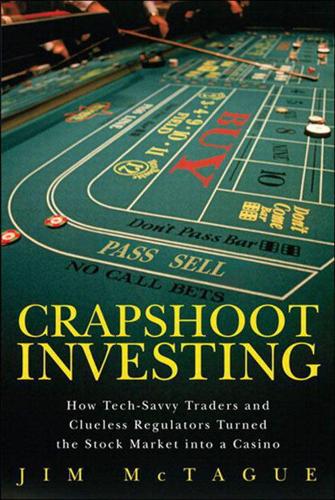
Crapshoot Investing: How Tech-Savvy Traders and Clueless Regulators Turned the Stock Market Into a Casino
by
Jim McTague
Published 1 Mar 2011
He said he had been misled about the efficacy of the rule by program traders and a trial run that had produced deceptive results about the efficacy of the Uptick Rule: “The elimination of the Uptick Rule was based on the heavy lobbying of the SEC by investors who engage in Quant or black box program trading techniques,” said Cox. “The lobbying efforts suggested that the Uptick Rule interfered with the efficiencies in which their platforms executed trades and set forth a series of events that resulted in the elimination of the Uptick Rule. I offer that the SEC was fooled by the results of the pilot program on several fronts... Several economists suggested that the short sellers ‘played nice’ for the short term in order to achieve their longer term goals.
…
“I was just horrified at a whole series of things that they had done. One of them was their treatment of short selling. There’s nothing wrong with short selling. I’ve done it myself,” he said. But he was appalled that Cox had done away with the uptick rule, which made it more difficult to sell stocks short—and thus drive down prices when the market was in a free fall. Cox and the commission had eliminated the Depression-era Uptick Rule in 2007, arguing that the regulation had been ineffective since 2001 when the stock market under pressure from President Bill Clinton’s SEC Chairman Arthur Levitt had shifted from trading in eighths (12.5 cents) and sixteenths (6.25 cents) to decimals (1 cent).
…
Several economists suggested that the short sellers ‘played nice’ for the short term in order to achieve their longer term goals. But beyond that, and more germane to present policies up for determination, is the condition of the markets during the pilot program. The SEC never tested the elimination of the Uptick Rule during the market sentiments that derived the origination of the Uptick Rule in the first place—the bear market.” Instead of reinstituting the rule, however, the SEC opted for a temporary ban in short selling of 799 financial stocks. Members of Congress wanted to prevent short sellers from driving down the stock prices of weak banks that were beneficiaries of federal bailout dollars.
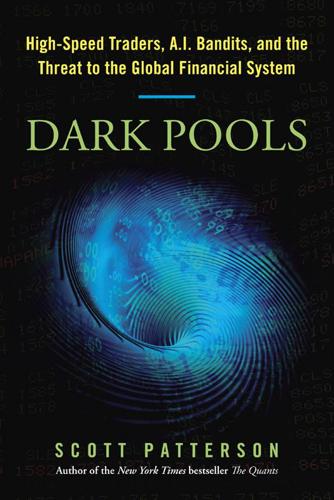
Dark Pools: The Rise of the Machine Traders and the Rigging of the U.S. Stock Market
by
Scott Patterson
Published 11 Jun 2012
It was suspicious of Island, for instance, because of its ties to the former Datek trading outfit. Inside Renaissance, the theory was that Island had been created to let Datek traders avoid the “uptick rule,” a regulation requiring traders to wait for a stock to tick higher before selling it short, hoping to profit from a decline. The uptick rule had been created in the 1930s to stop bear raids, when short sellers piled onto a stock and sold share after share in order to crack it. Traders using Island could simply ignore the uptick rule, since no regulator was monitoring exactly when each trade was made, at least according to Renaissance observers. An even worse fear: What if those Datek bandits opened up the hood at Island and started looking at Nova’s orders?
…
That, in turn, hurt their ability to provide liquidity to the market, hurting the little guy. Josh Levine, among others, pushed the SEC to repeal the uptick rule. The SEC finally agreed, and on July 6, 2007, the uptick rule was no more. The move attracted little attention at the time. But by the fall of 2008, when the financial system was collapsing and shares of firms such as Lehman Brothers and Morgan Stanley were plunging, the SEC came under heavy fire. In March 2009, Kaufman introduced a bill, along with Johnny Isakson, a Republican senator from Georgia, calling on the SEC to reinstate the uptick rule within sixty days. As Kaufman dug further into market structure, speaking with experts across the industry, he became increasingly alarmed by what he found.
…
Kaufman’s interest in computerized trading evolved out of his investigation into the SEC’s move in July 2007 to abolish the “uptick” rule. The rule, which had been in place since 1938, mandated that short sellers—traders hoping to profit from a decline in the price of a stock—could only make a move after the price of the stock ticked up. That helped prevent short sellers from bear raids in which they piled onto a stock and relentlessly drove it down with short after short. But in the late 1990s and early 2000s, an increasingly powerful group started lobbying for a repeal of the uptick rule: high-speed traders. The need to wait for an uptick in a stock before it could be shorted made it more difficult to jump in and out of stocks at lightning speeds.
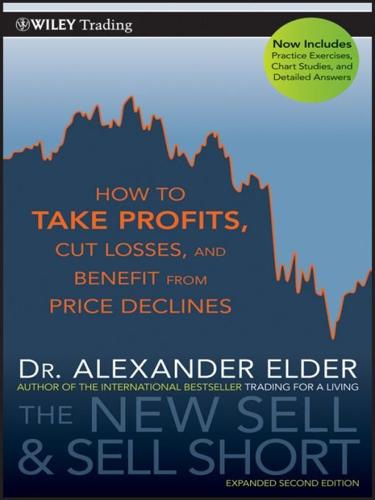
The New Sell and Sell Short: How to Take Profits, Cut Losses, and Benefit From Price Declines
by
Alexander Elder
Published 1 Jan 2008
While the government has a legitimate role in policing the market, in its zeal, it slapped several illogical restrictions on short-sellers. The worst of them was “the uptick rule,” which said you may only sell short if the previous tick—a minuscule price change—was an uptick. In other words, you may only sell short a rising stock. Ostensibly this was done to protect buyers from the packs of short-sellers hammering their stock with an avalanche of sell orders. I have only one question for these protectors of the public—why not have a downtick rule as well, to protect the innocent from being swept away in a bubble? To carry the uptick rule to its logical conclusion, a downtick rule would permit buying only on a downtick, when prices decline.
…
Figure 7.2 MS weekly Downhill faster than uphill: from 58 to 75 in 14 weeks, from 75 to 58 in 8 weeks. Figure 7.3 EWY daily Downhill faster than uphill: from 59 to 69 in 19 days, from 69 to 60 in 12 days. A tremendously positive development occurred in the U.S. stock market while I was working on the first edition of this book. The government rescinded the uptick rule. The silly rule that was a part of the trading scene for some 70 years is finally gone! Of course, the futures markets never had a downtick rule. The government did briefly prohibit shorting of several groups of stocks during the crash of 2008-2009. Shorting has one great advantage over buying and one massive disadvantage.
…
Probably because this is not a “how to” book, nobody cares to reprint it, with only an occasional used copy turning up on book-selling websites. Leafing through my old copy, I want to share with you several quotes, before we turn to the topic of shorting futures. Of course, in shorting futures there is no silly “uptick rule.” When you place an order to sell a future, it makes no difference whether it is an order to sell a long position or to open a new short trade. There is no prohibition against insider trading. You can track the behavior of the insiders through the “commitments of traders” reports regularly published by the CFTC (Commodity Futures Trading Commission).
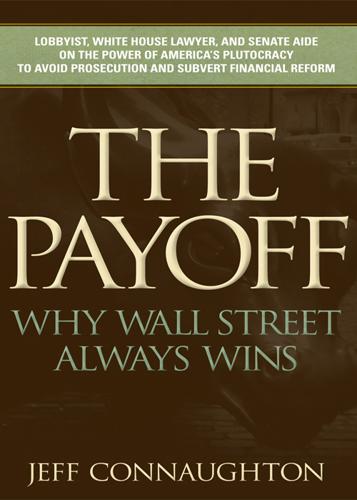
The Payoff
by
Jeff Connaughton
Forcing short sellers to wait for the price to tick up before they sell more shares gives a breather to a stock in rapid decline and helps prevent bear raids, which are essentially attacks on a stock (typically by hedge funds) with the aim of driving down its price to ensure that their short selling is profitable. The uptick rule was in force for nearly seventy years. In 2007, the SEC rescinded it. In Mary Schapiro’s confirmation hearings before the Senate Banking Committee, she was asked repeatedly whether she would restore the uptick rule. Schapiro, who took office as SEC chairman in January 2009, all but promised she would. Nothing happened. So on March 3, 2009, Ted wrote to Schapiro, urging her to take action. On March 16, he and Senator Isakson introduced a bipartisan bill that, if passed, would’ve required the SEC to take action.
…
It was here that he developed close friendships with a number of Republican senators, who responded to the sincerity of Ted’s faith. Senator Johnny Isakson (R-GA) was one of them. Isakson and Ted shared an interest in financial issues, and both had recently received complaints from constituents about the naked short selling of stocks by hedge funds and about the SEC’s rescission of the uptick rule. If you think a stock is undervalued, you can buy in the belief that its price will rise over time. If you think a stock is overvalued, you can sell it short in the belief that its price will drop over time. Selling short involves selling shares you don’t own. If the price does drop, you can make a profit when you buy the stock to cover your short sale (if it rises, you make a loss).
…
The WSJ called the letter “the broadest statement yet from a legislator in the continuing debate over the growth in high-frequency trading, a lightning-fast, computer-based trading technique.” Ted had landed his first punch in the fight to protect average investors. Undeterred by our setbacks in seeking the return of the uptick rule and tighter restrictions on naked short selling, Ted and I had delved deeper into an even more arcane, complex, and problematic realm: the overall functioning of the U.S. stock market. As MBAs and experienced investors, we thought we knew how the stock market worked. We didn’t. Our knowledge was dated; and with regard to ominous new developments, it was nonexistent.
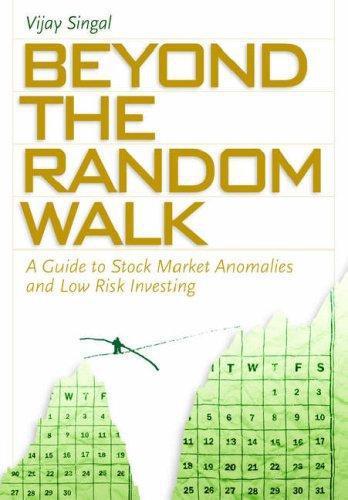
Beyond the Random Walk: A Guide to Stock Market Anomalies and Low Risk Investing
by
Vijay Singal
Published 15 Jun 2004
Brokers do not hold orders to short-sell overnight. After several attempts, assume that S’s brokerage firm is able to borrow shares of XYZ for a short sale. Now it sends the order, tagged as a short sale, to sell 100 shares of XYZ to the market maker. Seeing that the order is a short sale, the market maker must abide by the uptick rule. According to the uptick rule, short sales may be made only if the last executed price is above the previously executed price or if the last change in price was upward. Thus, S may not be able to sell XYZ if the stock is trending down. Assume that XYZ moved up and the market maker is able to shortsell 100 shares of XYZ on S’s behalf.
…
The inability to trade implies that short sellers are unable to control losses that may occur due to news or stock price moves after market hours. Thus, short sellers are averse to holding positions over nonmarket hours and like to close positions at the end of the day and reopen them the next morning. However, the transaction costs of closing and opening a position, the uptick rule, and limited availability of shares to short-sell make it expensive for the short sellers to trade too often.4 The weekend becomes a natural break point, as it is a long period (65.5 hours for a regular weekend and 89.5 hours for a long weekend) of nontrading compared to the normal interday period (17.5 hours) of nontrading.5 Thus, the inability to trade over the weekend makes many short sellers close their speculative positions at the end of the week and reopen them at the beginning of the following week, leading to The Weekend Effect the weekend effect.
…
Since Mondays follow days that are closed for trading, the Monday return should actually reflect the return for more than one day and, therefore, should be greater than the return on other days. Thus, the weekend effect should be negative for all securities. 3. See Appendix B for a discussion on short selling. 4. Under the uptick rule, an investor cannot short sell shares of a stock that is falling in price. 5. Since price volatility over nontrading hours is much smaller than during trading hours, it can be argued that nontrading hours are less important than trading hours in terms of volatility. However, note that as short sellers can monitor prices during trading hours and take action, the volatility during trading hours is inconsequential, even desirable.
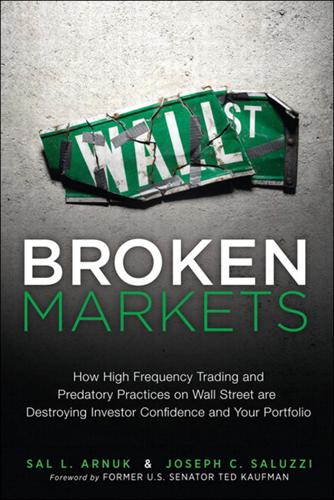
Broken Markets: How High Frequency Trading and Predatory Practices on Wall Street Are Destroying Investor Confidence and Your Portfolio
by
Sal Arnuk
and
Joseph Saluzzi
Published 21 May 2012
Along with Republican Senator Johnny Isaakson, I wrote to SEC Chair Mary Schapiro, asking her to follow up on her confirmation hearing pledge to look into reinstating the “uptick rule,” which had been removed in what former SEC Chair Chris Cox admitted had been a mistake. Short sellers play an important role in maintaining an orderly market. But there also are predatory bears. If not policed, they could have a devastating effect by creating a never-ending, negative feedback loop. The uptick rule helped to prevent that by prohibiting the shorting of a security unless the most recent trade was an increase in price. As it turned out, I lost the battle to reinstate the rule.
…
Senate Banking Sub-Committee in May 2001, Acting SEC Chair Laura Unger testified that the SEC “estimated that quote sizes in NYSE-listed securities have been reduced an average of 60% since the conversion to decimals and preliminary analyses of NASDAQ securities show a 68% reduction in quote sizes.” Pinging and sniffing for order flow became much easier. Limit orders that were displayed by retail and institutional investors could easily be stepped in front of now because it took only a penny to price improve. The short sale uptick rule became virtually useless because it, too, took only a penny to move a stock back into compliance. The effect on small and mid-cap market maker economics was devastating. Margin compression drove many market makers out of business. The void would later be filled by high frequency traders who posed as market makers, but with none of the affirmative and negative obligations that specialists and NASDAQ market makers had.
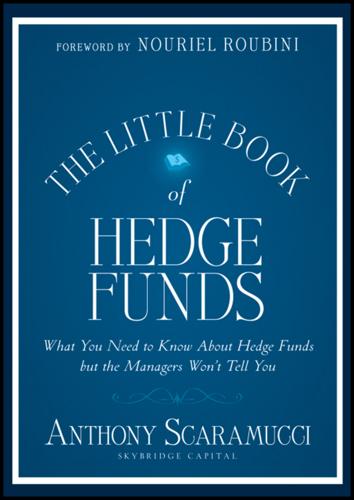
The Little Book of Hedge Funds
by
Anthony Scaramucci
Published 30 Apr 2012
How to Short a Stock Step 1: The hedge fund manager identifies a position that he thinks is overvalued in the marketplace—this finding is based upon a thorough analysis of the company’s fundamentals and/or technical analysis. Alternatively, managers may get intel on the potential short position from their respective prime brokers. Step 2: The manager borrows the stock from the prime broker and sells it into the market. (There used to be an uptick rule, meaning you could only short stock on a price uptick, but not any longer. Many people believe that this rule should be reinstated, but until it is, you can sell the stock right into the market.) Step 3: If the manager is correct—as David Einhorn was about Lehman Brothers in 2008 and currently is with Green Mountain Roasters—that the fundamentals of the company are flawed and the stock is overvalued, there will be a steep drop in the value of the stock.
…
The short seller keeps the rest of the crowd honest and corporate management teams on their toes. Oftentimes, he is the searchlight onto corporate fraud or bad corporate practices. While there is an argument to be made that short sellers can unfairly raid a company and force its demise through negative selling momentum (this has become worse with the elimination of the uptick rule where one could only short a stock on an uptick thus preventing or at least speed bumping negative momentum), this practice is essential for correcting market inefficiencies and for an economy that welcomes a free market system. Okay, now that I got that off my chest . . . let’s move on! And the Beat Moves On . . .
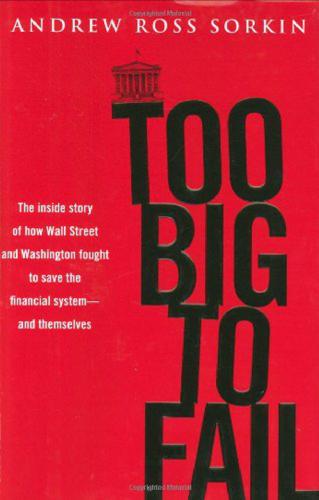
Too big to fail: the inside story of how Wall Street and Washington fought to save the financial system from crisis--and themselves
by
Andrew Ross Sorkin
Published 15 Oct 2009
And however protective the restrictions may have been intended to be, Fuld knew perfectly well that investors could get around them by using options and derivatives. Donini, skeptical that the uptick rule was Lehman’s biggest problem, interjected on behalf of Fuld. “What are you trying to accomplish, Jim?” he asked. “The shorts are destroying great companies,” Cramer replied. “They destroyed Bear Stearns, and they’re trying to destroy Lehman,” he said, perhaps trying to play to Fuld’s ego. “I want to stop that.” “If you’re trying to accomplish that,” Donini replied, “and you believe that shorts are causing the problem, then I don’t believe the uptick rule is the way to do it.” Donini explained to Cramer that he felt the real problem in the marketplace was “naked shorting.”
…
You know, I read it like you did—I hope it’s not true…. Eliot’s my friend. So he’s my friend, he’ll be my friend after.” “DealBook: Wall Street on Spitzer: ‘There Is a God,’” New York Times, March 10, 2008. the uptick rule: After the rule’s repeal on July 6, 2007, Cramer continuously lamented the loss on his show Mad Money. “Cramer Is Uptick’d Off” and “Out with Cox, in with Uptick Rule,” Mad Money, CNBC, May 4, 2009, November 21, 2008. “unbelievable portfolio from Peloton”: Founded in 2005 by Ron Beller and Geoffrey Grant, the London hedge fund Peloton Partners was forced into a fire sale in February 2008.
…
Cramer nodded his head energetically. “Look,” he said, “I think there is definitely a problem with the shorts—they’re leaning all over you.” Fuld was gratified to see that he had a receptive audience. As he was well aware, his short-seller predicament touched on an obscure issue near and dear to Cramer: the uptick rule—a regulation that had been introduced by the Securities and Exchange Commission in 1938 to prevent investors from continually shorting a stock that was falling. (In other words, before a stock could be shorted, the price had to rise, indicating that there were active buyers for it in the market.
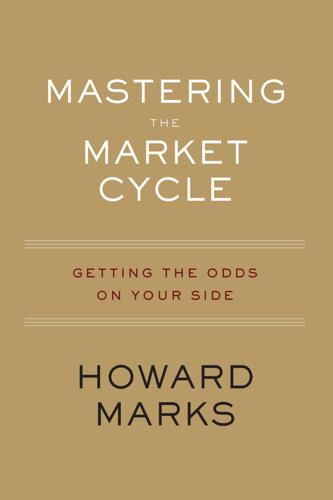
Mastering the Market Cycle: Getting the Odds on Your Side
by
Howard Marks
Published 30 Sep 2018
Here’s a partial list: Government policies supported an expansion of home ownership—which by definition meant the inclusion of people who historically couldn’t afford to buy homes—at a time when home prices were soaring; The Fed pushed interest rates down, causing the demand for higher-yielding instruments such as structured/levered mortgage securities to increase; There was a rising trend among banks to make mortgage loans, package them and sell them onward (as opposed to retaining them); Decisions to lend, structure, assign credit ratings and invest were made on the basis of unquestioning extrapolation of low historic mortgage default rates; The above four points resulted in an increased eagerness to extend mortgage loans, with an accompanying decline in lending standards; Novel and untested mortgage backed securities were developed that promised high returns with low risk, something that has great appeal in non-skeptical times; Protective laws and regulations were relaxed, such as the Glass-Steagall Act (which prohibited the creation of financial conglomerates), the uptick rule (which prevented traders who had bet against stocks from forcing them down through non-stop short selling), and the rules that limited banks’ leverage, permitting it to nearly triple; Finally, the media ran articles stating that risk had been eliminated by the combination of: the adroit Fed, which could be counted on to inject stimulus whenever economic sluggishness developed, confidence that the excess liquidity flowing to China for its exports and to oil producers would never fail to be recycled back into our markets, buoying asset prices, and the new Wall Street innovations, which “sliced and diced” risk so finely, spread it so widely and placed it with those best suited to bear it.
…
Of course, the new financial products demonstrated—as usual—that financial innovations promising high returns with low risk rarely keep that promise. As for the relaxed regulations, the financial conglomerates permitted by revocation of the Glass-Steagall Act had extensive problems; the repeal of the uptick rule allowed the stocks of financial institutions to be driven down relentlessly; and several banks proved unable to survive under the high levels of leverage that had been allowed. Because of everything that had gone before, the consequences included massive mortgage defaults and home repossessions; downgradings and failures on the part of mortgage backed securities; collapsing home prices and the inability to sell existing homes; collapsing stock and corporate bond markets and the disappearance of liquidity; a total drying up of credit availability; and failures, bailouts and bankruptcies at a number of banks.
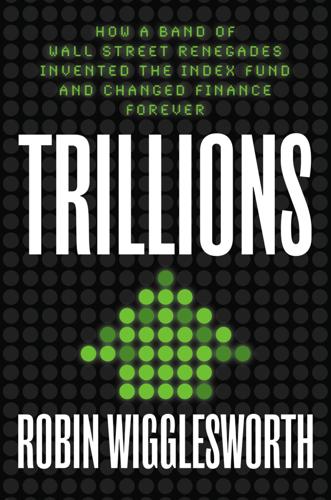
Trillions: How a Band of Wall Street Renegades Invented the Index Fund and Changed Finance Forever
by
Robin Wigglesworth
Published 11 Oct 2021
.* The brokerage firm Spear, Leeds & Kellogg played an important role as midwife to SPDR’s launch, putting up the initial $6.5 million capital for SPDR28 and becoming its first specialist, the firm that would ensure that it traded correctly and tracked the S&P 500. Gary Eisenreich, one of its floor traders, also caught a crucial flaw in the legal design at the last moment—the SEC’s “uptick” rule that limited when people can short a security—which could have imperiled the ability of specialists to ensure that SPDR traded correctly. At the last minute, Eisenreich and Moriarty worked with the SEC to get an exemption to the uptick rule.29 On January 29, 1993, SPDR finally began trading, to great fanfare. Desperate for its costly experiment to be a success, the Amex ran a full-page ad in the Wall Street Journal touting its invention, hung a giant inflatable black spider over its trading floor, and gave away oodles of spider-themed swag to traders and investors.
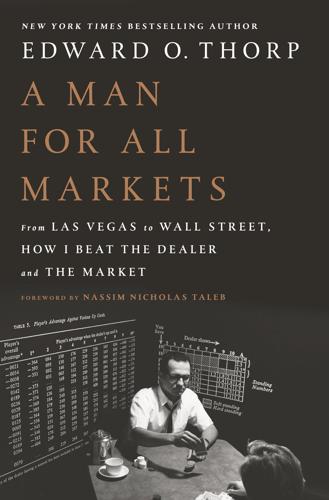
A Man for All Markets
by
Edward O. Thorp
Published 15 Nov 2016
When the price of the futures and that of the basket of underlying stocks converged, as they do later when the futures contracts settle, the arbitrageur closes out the hedge and captures the original spread as a profit. But on Tuesday, October 20, 1987, many stocks were difficult or impossible to sell short. That was because of the uptick rule. The rule was part of the Securities Exchange Act of 1934 (rule 10a-1). It specified that, with certain exceptions, short-sale transactions are allowed only at a price higher than the last previous different price (an “uptick”). This rule was supposed to prevent short sellers from deliberately driving down the price of a stock.
…
I told him to do it for PNP and do it now, or else I wanted him to do it for my account. If that was his choice, I told him I would later tell all the other partners how the profit I made would have, but for him, belonged to the partnership rather than to me. Here was my reasoning. If, because of the uptick rule, only about half the shorts got off, then we would be properly hedged and make about $750,000. If none got off (extremely improbable), we were buying the futures at an enormous discount—the index itself would have to fall more than another 13 percent before we began to lose. At the other extreme, especially in a market panic, there was virtually no chance all the shorts would go off.
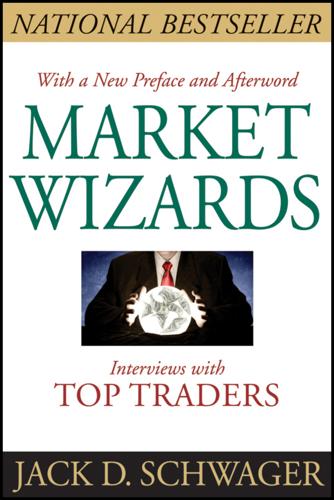
Market Wizards: Interviews With Top Traders
by
Jack D. Schwager
Published 7 Feb 2012
Yes, but with a different mentality. I traded stocks from a little longer time horizon. I don’t feel the same pressure when I own 100,000 shares of stock as when I own 100 S&Ps. Will you trade stocks as readily from the short side as the long side? No, I find it harder to trade stocks from the short side. Because of the uptick rule? No, it is just easier to short the S&P, because you get so much more bang for the buck. Also, I hate the specialist system; they are always trying to con you to death. I’ll give you my view on specialists: Never in my life have I met a less talented group of people who make a disproportionately large amount of money relative to their skills.
…
The minimum possible price movement, up or down, in a market. Trend. The tendency of prices to move in a given general direction (up or down). Trend-following system. A system that generates buy and sell signals in the direction of a newly defined trend, based on the assumption that a trend, once established, will tend to continue. Uptick rule. A stock market regulation that short sales can only be implemented at a price above the preceding transaction. Uptrend. A general tendency for rising prices in a given market. Volatility. A measure of price variability in a market. A volatile market is a market that is subject to wide price fluctuations.

Adaptive Markets: Financial Evolution at the Speed of Thought
by
Andrew W. Lo
Published 3 Apr 2017
During the financial “go-go years” of the late 1960s, the number of hedge funds boomed to nearly two hundred, holding assets of approximately $1.5 billion, as estimated by the SEC in early 1969.14 Of course, all booms are relative: the fast financial pace of the sixties would be an achingly slow waltz by the standards of the early computer trading era, and it would seem frozen in amber compared to today’s microsecond trading platforms. Most of these funds declined or became extinct during the bear market of 1969, and for a very basic reason: they failed to hedge.15 In part, this was because short selling was considerably more difficult in the 1960s than it is today. At that time, the “uptick rule” mandated that all short sales had to take place while the price of a stock was still rising, and because trading was very light by current standards, it was more difficult to assemble a correctly hedged position. But it wasn’t totally impossible. After all, in previous years Jones was able to sell short quite successfully.
…
., 100 Sobel, Russell, 206 social Darwinism, 215 social exclusion, 85–86 social media, 55, 270, 405 Société Générale, 60–61 Society of Mind, The (Minsky), 132–133 sociobiology, 170–174, 216–217 Sociobiology (Wilson), 170–171 Solow, Herbert, 395 Soros, George, 6, 219, 222–223, 224, 227, 234, 244, 277 sovereign wealth funds, 230, 299, 409–410 Soviet Union, 411 Space Shuttle Challenger, 12–16, 24, 38 specialization, 217 speech synthesis, 132 Sperry, Roger, 113–114 “spoofing,” 360 Springer, James, 159 SR-52 programmable calculator, 357 stagflation, 37 Standard Portfolio Analysis of Risk (SPAN), 369–370 Stanton, Angela, 338 starfish, 192, 242 Star Trek, 395–397, 411, 414 stationarity, 253–255, 279, 282 statistical arbitrage (“statarb”), 284, 286, 288–291, 292–293, 362 statistical tests, 47 Steenbarger, Brett, 94 Stein, Carolyn, 69 sterilization, 171, 174 Stiglitz, Joseph, 224, 278, 310 Stocks for the Long Run (Siegel), 253 stock splits, 24, 47 Stone, Oliver, 346 Stone Age, 150, 163, 165 stone tools, 150–151, 153 stop-loss orders, 359 Strasberg, Lee, 105 stress, 3, 75, 93, 101, 122, 160–161, 346, 413–415 strong connectedness, 374 Strong Story Hypothesis, 133 Strumpf, Koleman, 39 “stub quotes,” 360 subjective value, 100 sublenticular extended amygdala, 89 subprime mortgages, 290, 292, 293, 297, 321, 327, 376, 377, 410 Sugihara, George, 366 suicide, 160 Sullenberger, Chesley, 381 Summers, Lawrence (Larry), 50, 315–316, 319–320, 379 sunlight, 108 SuperDot (trading system), 236 supply and demand curves, 29, 30, 31–33, 34 Surowiecki, James, 5, 16 survey research, 40 Sussman, Donald, 237–238 swaps, 243, 298, 300 Swedish Twin Registry, 161 systematic bias, 56 systematic risk, 194, 199–203, 204, 205, 250–251, 348, 389 systemic risk, 319; Bank of England’s measurement of, 366–367; government as source of, 361; in hedge fund industry, 291, 317; of large vs. small shocks, 315; managing, 370–371, 376–378, 387; transparency of, 384–385; trust linked to, 344 Takahashi, Hidehiko, 86 Tanner, Carmen, 353 Tanzania, 150 Tartaglia, Nunzio, 236 Tattersall, Ian, 150, 154 Tech Bubble, 40 telegraphy, 356 Tennyson, Alfred, Baron, 144 testosterone, 108, 337–338 Texas hold ’em, 59–60 Texas Instruments, 357, 384 Thackray, John, 234 Thales, 16 Théorie de la Spéculation (Bachelier), 19 theory of mind, 109–111 thermal homeostasis, 367–368, 370 This Time Is Different (Reinhart and Rogoff), 310 Thompson, Robert, 1, 81–82, 83, 103–104 three-body problem, 214 ticker tape machine, 356 tight coupling, 321, 322, 361, 372Tiger Fund, 234 Tinker, Grant, 395 Tobin tax, 245 Tokugawa era, 17 Tooby, John, 173, 174 tool use, 150–151, 153, 162, 165 “toxic assets,” 299 trade execution, 257, 356 trade secrets, 284–285, 384 trading volume, 257, 359 transactions tax, 245 Treynor, Jack, 263 trial and error, 133, 141, 142, 182, 183, 188, 198, 265 Triangle Shirtwaist Fire, 378–379 tribbles, 190–205, 216 Trivers, Robert, 172 trolley dilemma, 339 Trusty, Jessica, 120 Tversky, Amos, 55, 58, 66–67, 68–69, 70–71, 90, 106, 113, 388 TWA Flight 800, 84–85 twins, 159, 161, 348 “two-legged goat effect,” 155 UBS, 61 Ultimatum Game, 336–338 uncertainty, 212, 218; risk vs., 53–55, 415 unemployment, 36–37 unintended consequences, 7, 248, 269, 330, 358, 375 United Kingdom, 222–223, 242, 377 University of Chicago, 22 uptick rule, 233 Urbach-Wiethe disease, 82–83 U.S. Treasury bills, 203, 242, 250, 251, 259, 273, 332, 333, 334, 360 utility function, 203, 217 Vallone, Robert, 68–69 valuation, 97 value investing, 231 Value Line index, 265 Vanguard Group, 6, 265, 399 Vanguard Index Trust, 263, 265 variance, 47–48 Veblen, Thorstein, 215 ventral striatum, 121–122 ventral tegmental area, of brain, 89 ventromedial prefrontal cortex, 102, 107 venture capital, 236, 240, 401–403, 405, 407, 409 Viniar, David, 287 virgin soil epidemic, 344 VIX index, 270 voice recognition, 132 volatility: of commodity prices, 30, 247; in currency markets, 369; as form of risk, 250, 258–259; historical trends in, 254–257, 259–260, 262, 323, 369; of housing prices, 261; of index funds, 270–273; insuring against, 273, 274; physiological response to, 94; put options to manage, 273–276, 305, 368; regulating, 370; sigma as measure of, 232; stock market direction distinguished from, 274; stock prices negatively correlated with, 274, 276 Volcker, Paul, 329, 399–400 Volcker Rule, 329 Wagner, Alexander F., 353 Wagon Train (television program), 395 Wallace, Alfred Russell, 8 Wall Street (film), 345–346 Walmart, 164–165 warrants, 18 Watson (supercomputer), 132 Watson, James, 137, 144, 401 Watt, James, 165 Waymire, Gregory B., 354 Wealth of Nations, The (Smith), 28 weather, 21 Weber, Max, 346 Weinshall-Margel, Keren, 166–167 welfare programs, 7 Wells Fargo, 386–387 West-Eberhard, Mary Jane, 155 wheat prices, 20 whiskey, 29 Whitehead Institute for Biomedical Research, 418 White House Commission on Aviation Safety and Security, 85 Whole Genome Shotgun project, 403 wildcat banking, 344 Wilson, Edward O., 170–173, 215, 216, 217 Wilson, Edwin Bidwell, 210 Wilson, Woodrow, 39 Williams, Kip, 85–88 Williamson, Rebecca A., 337 winning streaks, 68 Winston, Patrick, 133 Winter, Sidney, 219 wisdom of crowds, 3, 9, 11, 261, 282, 420; accurate pricing linked to, 38; Challenger disaster and, 16; Efficient Markets Hypothesis linked to, 26; experimental validation of, 41–43; individual errors negated by, 51, 108–109, 250; as orthodoxy, 5 Wolfe, Tom, 322 Woodward, Bob, 7 Woodward, Susan, 310 World Bank, 412 writing, 165 Yang, Helen, 379 Yeager, Chuck, 13 Yeltsin, Boris, 242 Zak, Paul J., 338 Zeckhauser, Richard, 277–278 Zhang, Ruixun, 218, 220, 362 Zimbardo, Philip, 347, 387–388 Zingales, Luigi, 353–354 Zuckerberg, Mark, 55 Zweig, Jason, 281 Table of Contents Title Page Copyright Page Dedication Page Contents Introduction Financial Fear Factor Don’t Try This At Home The Great Divide “It’s the environment, stupid!”
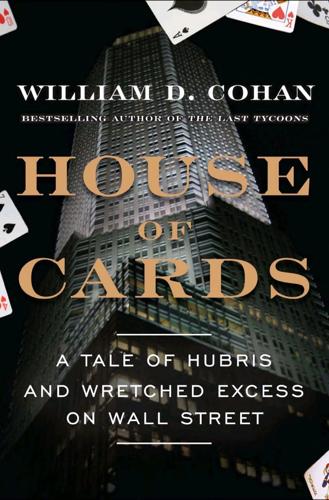
House of Cards: A Tale of Hubris and Wretched Excess on Wall Street
by
William D. Cohan
Published 15 Nov 2009
So the thirty and ten times issue would have meant Goldman was gone long before Citi or UBS or anybody had to dip into the capital pool.” Many people also blame what happened in 2008 on the SEC's decision in 2007 to eliminate the “uptick rule,” which required that every short sale be transacted at a price higher than the price of the previous trade. By eliminating the rule, the death spiral of a stock can be accelerated. The intent of the rule was to buy time for the stock as it free-falls and force short sellers to pause before transacting. Without the uptick rule, stocks are susceptible to “bear raids,” where short sellers can overwhelm a stock in huge surges of selling that intimidate buyers from stepping in.

Irrational Exuberance: With a New Preface by the Author
by
Robert J. Shiller
Published 15 Feb 2000
After all, the two 226 A C ALL TO AC TION biggest stock market crashes in history, the crashes of October 1929 and October 1987, occurred on Mondays, after the price declines of the previous trading day had been interrupted by an entire weekend. Another example of a deliberate restraint of trade to prevent bubbles is the uptick rule for short sales. The Securities and Exchange Commission has long required of exchanges that short sales be allowed only on an uptick, that is, only if the preceding trade was on an increasing price. Yet these various policies of closing the market, for a matter of seconds, minutes, hours, or days, do not directly address the longer-term price movements—movements that take place over years—that represent the really big stock price shifts.
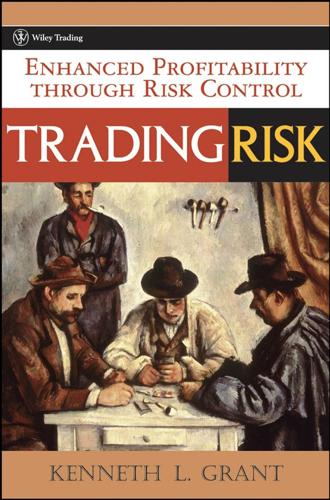
Trading Risk: Enhanced Profitability Through Risk Control
by
Kenneth L. Grant
Published 1 Sep 2004
For example, it was plainly easier to trade the long side of the stock market in the last half of the 1990s, first, because the market enjoyed a sustained rally for the entire period; second, because the equity markets are structurally organized under all market conditions to favor long bets through such mechanisms as the “uptick rule” for short sales, the rather complicated “borrowing-based” mechanics of short selling, the rules that compel large institutional portfolios to operate exclusively on the long side of the market, and other factors. We 136 TRADING RISK must bear in mind that short-selling in the equities markets represents, when results are characterized in terms of their extremes, an asymmetric bet under which gains are limited by the fact that a stock cannot price itself at a value less than zero, while potential losses are, at least in theory, unlimited in nature, as there is no upper bound to the value at which a security can trade.
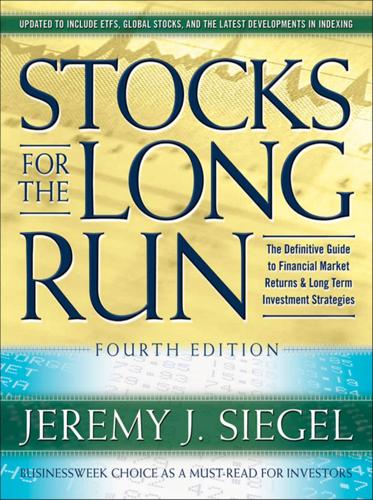
Stocks for the Long Run, 4th Edition: The Definitive Guide to Financial Market Returns & Long Term Investment Strategies
by
Jeremy J. Siegel
Published 18 Dec 2007
The volume in New York dropped by more than 25 percent on the day the Chicago futures market was closed; and some dealers claimed that if the futures exchange remained inoperative, it would cause liquidity problems and difficulty in executing some trades in New York.4 Michael Metz, a market strategist at Oppenheimer & Co., declared: “It’s been absolutely delightful; it 3 ETFs are exempt from the uptick rule that until recently restricted shorting stock when the price is falling. 4 Robert Steiner, “Industrials Gain 14.53 in Trading Muted by Futures Halt in Chicago,” Wall Street Journal, April 14, 1992, p. C2. 254 PART 4 Stock Fluctuations in the Short Run FIGURE 15–1 When Stock Index Futures Closed Down, April 13, 1992 SOURCE: Bloomberg L.P.
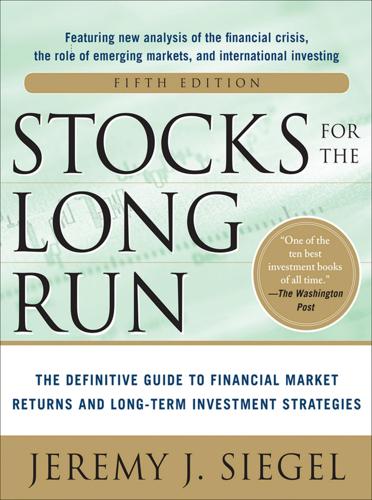
Stocks for the Long Run 5/E: the Definitive Guide to Financial Market Returns & Long-Term Investment Strategies
by
Jeremy Siegel
Published 7 Jan 2014
C2. 5. “Flood in Chicago Waters Down Trading on Wall Street,” Wall Street Journal, April 14, 1992, p. C1. Today the proliferation of electronic trading has made it impossible for an incident such as the one that crippled the Chicago exchange 20 years ago to happen again. 6. The SEC eliminated the “uptick rule” (shorting prohibited unless the last change was an uptick) in 2007, but in February 2010 the SEC reinstated the rule to apply when the price declines by 10 percent or more. 7. From 1997 through 2012, there was no capital gain distribution from spiders (S&P 500 ETFs), while the Vanguard 500 Index Fund has had several (although none since 2000). 8.

A First-Class Catastrophe: The Road to Black Monday, the Worst Day in Wall Street History
by
Diana B. Henriques
Published 18 Sep 2017
It did not apply to the pending stock index futures contract applications filed by the Kansas City Board of Trade, the Chicago Board of Trade, and the Chicago Merc. or if you were betting that a declining stock would keep dropping: At the time, a short sale (the sale of borrowed stock made in the hope of profiting when the price declined) could be made only after an “uptick,” that is, a price higher than the previous price. The uptick rule made it difficult to sell short in a falling market, and acted as something of a brake on the decline. offered a research job at the New York Fed: Interview with E. Gerald Corrigan, May 26, 2015 (hereafter “Corrigan interview”). “all from Ivy League schools or Stanford or Berkeley. And then there was me”: Ibid.

The Unwinding: An Inner History of the New America
by
George Packer
Published 4 Mar 2014
Connaughton saw Kaufman—seventy years old, with a musty MBA from Wharton—as Rip Van Winkle, waking up in the age of “synthetic collateralized debt obligations” and “naked credit default swaps.” What the hell happened to Glass-Steagall, which maintained a wall between commercial and investment banking? (Passed by Congress in 1933, repealed by Congress in 1999, bipartisan vote, Clinton’s signature.) What about the “uptick rule,” which required investors to wait until a stock rose in price before selling it short? (Instated by the SEC in 1938, abolished by the SEC in 2007.) It was easy to overlook this denuded free-market landscape during the long boom years—Connaughton had done just that—but when the storms blew in and there were no walls to keep out the gale or trees to hold down the eroded earth, everyone howled.

New Market Wizards: Conversations With America's Top Traders
by
Jack D. Schwager
Published 28 Jan 1994
A trading range implies a directionless market. Trend. The tendency of prices to move in a given general direction (up or down). Trend-following system. A system that generates buy and sell signals in the direction of a newly defined trend, based on the assumption that a trend, once established, will tend to continue. Uptick rule. A stock market regulation that short sales can be implemented only at a price above the preceding transaction. Uptrend. A general tendency for rising prices in a given market. Volatility. A measure of price variability in a market. A volatile market is a market that is subject to wide price fluctuations.
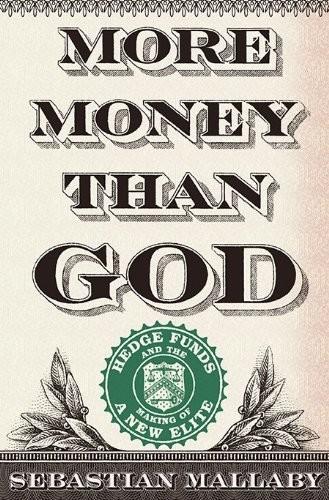
More Money Than God: Hedge Funds and the Making of a New Elite
by
Sebastian Mallaby
Published 9 Jun 2010
They accused hedge funds of a reckless policy of “short and distort,” and Lehman’s combative chief executive, Richard Fuld, virtually declared war. “I will hurt the shorts, and that is my goal,” he vowed at the firm’s annual meeting.6 Fuld did his best to persuade the authorities in Washington to solve his problem. They should restrict short selling of Lehman shares, for instance by reinstating the defunct uptick rule, which prevented speculators from shorting a stock while it was falling. In April, Erik Sirri, a top Securities and Exchange Commission official, pressed Fuld for evidence that hedge-fund behavior justified this sort of treatment. What evidence did Fuld have that the funds were colluding to push Lehman under?
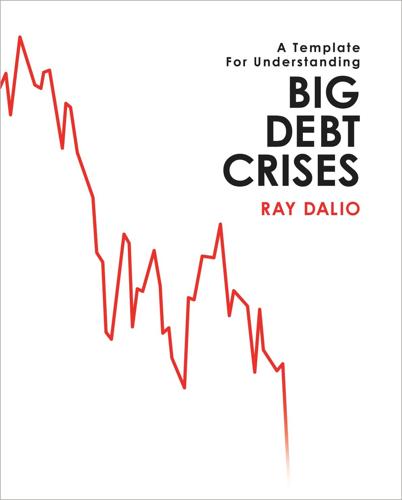
Big Debt Crises
by
Ray Dalio
Published 9 Sep 2018
Stocks surged 6.4 percent on Tuesday, led by a 38 percent jump in Citigroup shares, following a memo to employees from Citigroup’s CEO stating that the bank was once again profitable, a well-received speech by Chairman Bernanke on reforms to financial regulation, and reports that lawmakers were close to re-instituting the uptick rule to slow short-selling of stocks. Policy Makers Launch Coordinated Counterattack: March–April 2009 Behind the scenes, policy makers at the Fed and the Treasury department were planning a coordinated set of “shock and awe” policies designed to shore up the financial system and provide the money needed to make up for contracting credit.